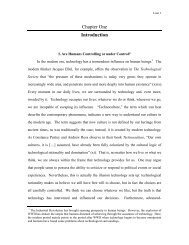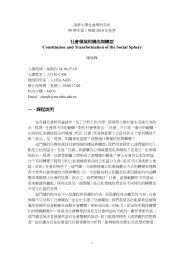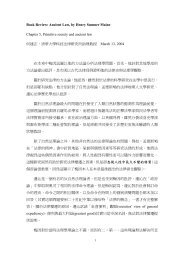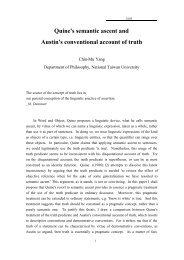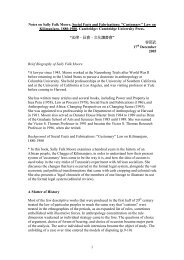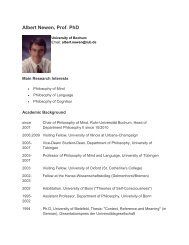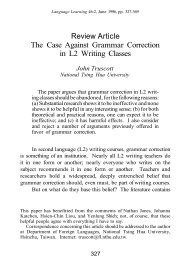Effects of Graded Texts on EFL College Students' Incidental ...
Effects of Graded Texts on EFL College Students' Incidental ...
Effects of Graded Texts on EFL College Students' Incidental ...
You also want an ePaper? Increase the reach of your titles
YUMPU automatically turns print PDFs into web optimized ePapers that Google loves.
Word List (鄭恆雄, 2002; 2003), which includes the most frequent and useful 4600<br />
words for high school students in Taiwan was employed in order to compensate GSL.<br />
The High School Frequent Word List (HSF) was c<strong>on</strong>structed by c<strong>on</strong>sulting previously<br />
developed popular word lists such as GSL and COBUILD (Sinclair, 1995), and<br />
modificati<strong>on</strong> <strong>on</strong> frequent words in these lists were c<strong>on</strong>ducted for Taiwanese high<br />
school learners <str<strong>on</strong>g>of</str<strong>on</strong>g> English. It was used as a guideline for writing high school<br />
English textbooks in Taiwan and therefore, college freshmen supposedly should have<br />
already acquired these words when they were in high school. Since the original HSF<br />
word lists does not provide the words bel<strong>on</strong>ging in each family, we completed the<br />
words for each family by specifying the comm<strong>on</strong> inflecti<strong>on</strong>al forms such as –ing, -ly,<br />
or –ed and affixed words such as –un, -ment, or -ti<strong>on</strong> using Visual FoxPro 7.0.<br />
Three teachers were involved in determining items in each word family to ensure the<br />
inclusi<strong>on</strong> for each entry was indeed frequently used. As a result, 7256 words were<br />
determined as the HSF. The GSL and HSF together are thus able to address learners’<br />
background English learning experiences and were determined as familiar word lists<br />
in our <strong>on</strong>-line extensive reading syllabus.<br />
To identify target word lists, learners’ learning purpose was also our first priority.<br />
That is, depending <strong>on</strong> learners’ learning goals, learning words in the identified target<br />
word lists should take priority over learning other kinds <str<strong>on</strong>g>of</str<strong>on</strong>g> vocabulary. The first<br />
target word list that we selected was Xue and Nati<strong>on</strong>’s University Word List (UWL,<br />
1984). This word list c<strong>on</strong>sists <str<strong>on</strong>g>of</str<strong>on</strong>g> 800 word families, 3685 words, not in the GSL but<br />
frequently found in academic texts (Nati<strong>on</strong> & Ky<strong>on</strong>gho, 1995). This academic<br />
vocabulary gives an 8.5% coverage <str<strong>on</strong>g>of</str<strong>on</strong>g> academic text and 3.9% coverage <str<strong>on</strong>g>of</str<strong>on</strong>g><br />
newspapers (Ky<strong>on</strong>gho & Nati<strong>on</strong>, 1989). Since our learners are college freshmen<br />
expecting to meet unsimplified English textbooks in future studies, adding UWL as a<br />
target word list could be an introducti<strong>on</strong> to these highly useful academic words.<br />
30



